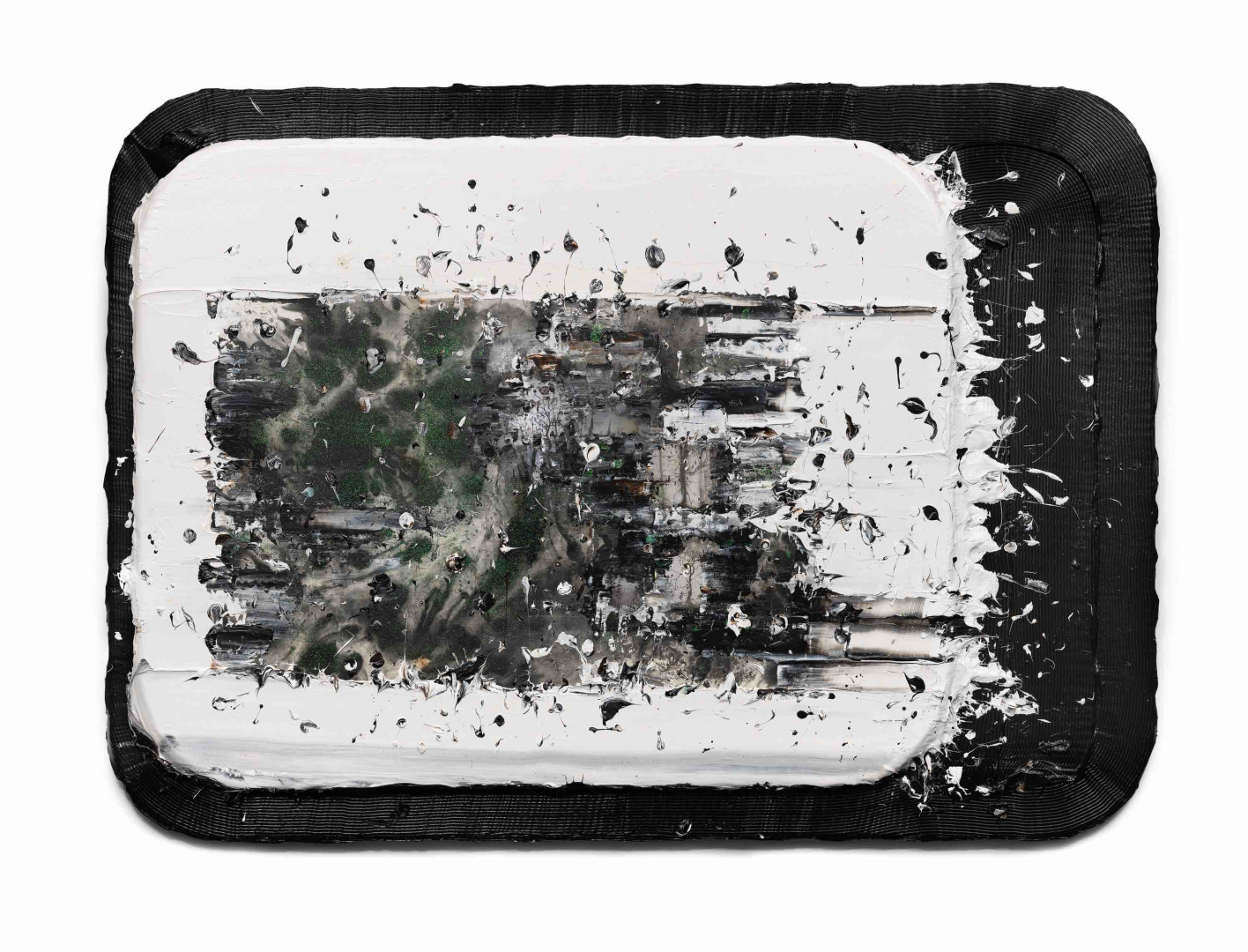Over the course of her artistic career, Jane Lee has consistently questioned painting’s parameters, beginning with an exploration of its material constituents. Her early work experimented with paint in various states, extending it into space, and subsequently questioning its relationship with contexts of display. In recent years and as in Paara Gate #2, Jane turns toward a more monochromatic palette. Aligned with her desire to grasp the essence of her art-making by stripping away all superfluous elements (such as color), the predominantly black-and-white palette creates an oscillation between positive and negative space. In her exploration of form and emptiness she is inspired by the Heart Sutra, a Buddhist text that proposes a philosophy of non-duality whereby “Form is emptiness, and emptiness is form”. Teaching that no-thing in the world has ultimate substantiality, the text’s closing invocation, gate gate paaragate paarasamgate bodhi svaha (gone gone gone to the other shore; gone completely to the other shore. Svaha), describes the experience of enlightenment through the letting go of all attachments – material, conceptual, or otherwise. As the artist punctures the surface of her works and scrapes away paint, she gives material shape to the Buddhist concept of “piercing the veil of illusion”.
(Edited from text excerpts provided by Sundaram Tagore Gallery)
